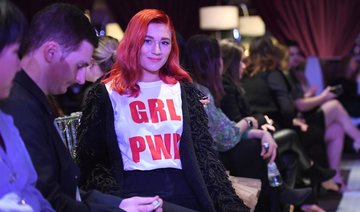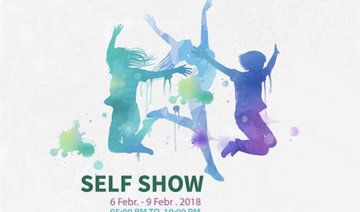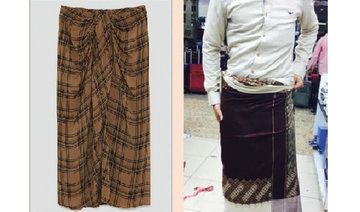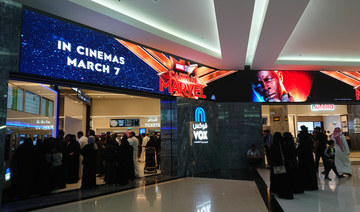NEW YORK: With Gigi Hadid as his opener and her royally dressed sister, Bella, at the end, Prabal Gurung celebrated the strength, grace and resilience of women in a collection full of vibrant purples, reds and blues, inspired in part by the women-led Mosuo tribe of China.
Gurung, raised by a single mother in Nepal, said in a backstage interview he’s had matriarchies on his mind for a collection over the last four or five years, deciding to go ahead with this one now amid the recent movements bringing women together to fight back against sexual misconduct and oppression around the world.
His bright pinks, some in lush cashmere and wool knits hand done in Nepal, and his sari and sarong-inspired draping, he said, were references to the Gulabi Gang of women activists in northern India. They “adorn themselves in pink saris symbolic of their self-proclaimed power and fearlessness,” Gurung said, as they come to the defense of women, vigilante style.
There were other elements, feather and sequin detailing, the use of velvet and pearls, that generally symbolized ceremonial wardrobes.
Bella Hadid took a slow walk around the bright sand art Gurung displayed on the floor wearing a strapless, royal-red cape gown with a gold cord belt. Gigi Hadid opened the show in a porcelain-white cashmere turtleneck with fox trim on the sleeves, an orchid-colored skirt and a draped sarong overlay that wound around her neck and fell below the waist.
He also embraced the practical, in shearling and quilted puffer jackets inspired by the need to trek.
Gurung said he grew up in a culture where color is celebrated in the clothes. After seeing the wear-black protest at the Golden Globes, he said he wanted to show women “in their full feminine glory.” Back home, he said, “color and texture was kind of unnerving for men.”
Usually, Victoria Beckham takes a quick little bow and a wave at the end of her runway show. On Sunday, she changed it up a little, rushing over to the front row to embrace husband David Beckham and their three younger children, Romeo, Cruz and Harper.
Beckham may have been emotional because she was beginning what she called her label’s 10th anniversary year. In her show notes, the British designer noted that she wanted Sunday’s show to be “a quiet celebration of where we have come since those very first appointments here in New York.” In September, she plans to show at London Fashion Week to fete her anniversary.
Beckham was also showing in a new space on the Upper East Side of Manhattan — the James A. Burden House, an Italian Renaissance-style mansion completed in 1905. Guests climbed a grand spiral staircase to arrive at the show.
It was a collection heavy on workplace looks, with belted coats and jackets with defined shoulders and drawn-in waists. Her favorite item, Beckham said afterward, was a striking belted leopard-print coat, made from a chenille jacquard fabric that was based on Venetian upholstery. She also featured clingy leggings, ankle cuffs in leather, and a print on silk that resembled fur — “my take on fake fur,” she explained afterward.
At DVF, the label’s creator, Diane von Furstenberg, introduced a new (and returning) designer — Nathan Jenden — and a new muse for the brand: her 18-year-old granddaughter, Talita von Furstenberg, who modeled an outfit from the new collection and pronounced it “really cool” to embark on her new role.
Jenden, who returned to the label in January after working there for a decade until 2011, said he’d chosen the young von Furstenberg as his muse after watching her grow up. “I’ve known her since she was 2,” he noted.
The new collection included a lot of riffs on the iconic DVF wrap dress — some obvious and some more subtle.
“To me it was obvious what we needed to do,” Jenden said in an interview. “Richness, layer on layer of fabrics. There’s a lot of wrap. If you look carefully, everything is constructed so it feels like a little light jersey dress.”
Von Furstenberg, 71, made a pointed reference to the #MeToo movement in remarks to the crowd at her downtown showroom.
“I just wanted to say that with everything that’s happening with women right now ... I personally am more committed than ever to the empowerment of women,” she said. “And this is really important and the DVF woman through the generations has always been about being a woman in charge — in charge of her life, in charge of who she sleeps with, in charge of what she does. She’s in the driver’s seat.”
Jenden addressed the crowd as well, saying his designs were “all about being brave, about being unapologetically a woman, about celebrating femininity ... this is an homage to Diane, it’s an homage to Talita, it’s an homage to all women.”
Gigi and Bella Hadid celebrate women at Prabal Gurung NYFW show
Gigi and Bella Hadid celebrate women at Prabal Gurung NYFW show
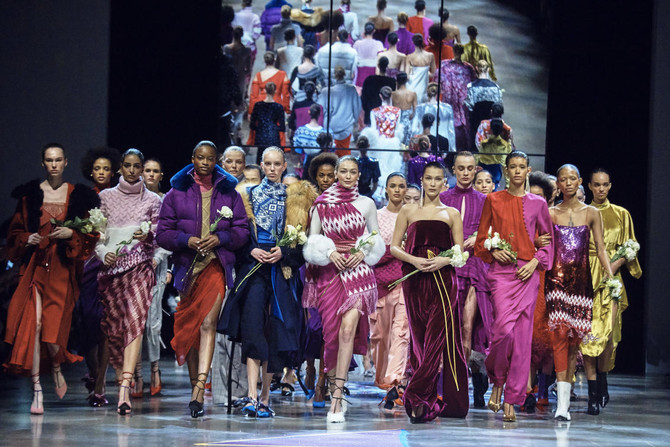
The story behind Saudi artist Alia Ahmad’s alluring abstracts

- Ahmad is garnering international attention, with two solo exhibitions in Europe
RIYADH: Hanging at the Diriyah Contemporary Art Biennale in Riyadh is a large canvas titled “Alwasm,” a 2023 painting by Saudi artist Alia Ahmad. It’s an instant showstopper. Guests on the opening night of the event, which runs until May 24, gathered around the painting, which was inspired by Wadi Hanifah in the Najd region of Riyadh, which is where the biennale is being staged. Commissioned for the event, the painting’s alluring warm tones and lively hues capture the titular period between October and December when the weather becomes cooler and there is respite from the arid desert heat.
Ahmad is on a roll. Since graduating from London’s Royal College of Art with a Master’s in 2020, the 28-year-old Riyadh-based painter has staged several solo exhibitions in her home country and has increasingly garnered international attention for her abstract expressionist canvases that depict the natural and urban landscape of her home country. Ahmad says she considers paintings “social spaces” as well as “blueprints.”

“These paintings represent my version of the landscape,” Ahmad tells Arab News. “They include elements that may be references to birds or various color palettes that aren’t necessarily found in the landscape, but that represent how I view it. I’m addicted to incorporating my imagination.”
The desert landscape, she stresses, “is not necessarily dry or empty. It has so much more.” And that is what she captures in the lush, lyrical brushstrokes of her abstract works, which are filled with references to local culture. “The traditional Arab bedouin dress is filled with color. As are the tents,” she says. “Women here have traditionally embellished their gowns. Where does this sense of vibrant creativity come from? The color and playfulness we imbue our traditional dress and items with comes from the landscape.”
Ahmad recently staged her first solo exhibition in Europe. “Terhal Gheim (The Voyage of the Clouds)” runs at White Cube in Paris until May 18.
On March 7 this year she sold her first work at auction at the Phillips 20th Century & Contemporary Art sale in London. Her painting “Malga — The Place in Which We Gather” sold for four times its estimate, bringing in a remarkable £101,600 (roughly SAR475,825).

And on May 2, another solo exhibition — “Thought to Image” — opened in London at Albion Jeune. Running until June 12, the show presents Ahmad’s alluring abstract landscapes, inspired by the hues of traditional textiles created by Sadu weavers of Bedouin tribes and the Arabic calligraphic script known as khatt.
“Much of my inspiration comes from textiles,” she explains. “At one point I was obsessed with buying pieces of fabric and making collages.”
She also used to draw stick-figure cartoons as a child, she adds. Those amateur drawings were works in progress — an aspect Ahmad continues to enjoy in her practice. “I loved the idea of having a drawing in progress to then fill in the blanks of what the character might look like later,” she says.
Ahmad’s paintings today are an amalgamation of various aspects of her homeland — its rich natural environment from the desert to the lush palm trees and other vegetation, local dress, jewelry and animals. She brings all of them together to depict in colorful abstract forms the richness of Saudi heritage, particularly that of her home region of Najd.
Her works, as international gallerists and collectors have found, are rife with specific local details that connect in some way with people across the world, even if only by piquing their curiosity about a country that has only recently really opened up to visitors.
Ultimately, Ahmad’s paintings serve as a unique reference point during a time of monumental social and economic change in the Kingdom, revealing and documenting a moment of both transformation and a desire to retain and promote Saudi’s rich heritage.
Her imaginary landscapes also include flattened perspectives, nods to her previous training in digital graphics. They reflect the futuristic visages of the modern world coupled with the beauty of the undulating curves of the desert landscape and the colorful attributes of Arabian culture.
Each painting takes the viewer on a voyage into a vibrant abstract world that echoes aspects of everyday reality.
As Ahmad puts it: “They are all playful paintings and I make sure that each work and each show I stage retains that aspect of curiosity.”
Saudi Arabia’s Wadi AlFann Publications launches art books after Venice showcase

DUBAI: AlUla-based Wadi AlFann Publications has launched two books — Saudi artist Manal AlDowayan’s “Oasis of Stories” and US artist Mark Dion’s “The Desert Field Guide.”
“Oasis of Stories” showcases drawings collected from AlDowayan’s participatory workshops with communities throughout AlUla, engaging over 700 Saudi women, leading up to her participation as the Kingdom’s representative at this year’s Venice Biennale.
The artworks, which were also displayed at the biennale, portray various aspects of the women’s lives, reflecting the rich tapestry of their culture and identity.

Dion’s book assists “visitors and locals in unlocking the vast natural history of (AlUla) as well as its growing status as a cultural site,” he told Arab News.
“The deserts of AlUla are places of astonishing beauty and uncanny life forms,” Dion added. “The guide playfully, and at times mischievously, places Wadi AlFann in a global context, while highlighting unique life forms visitors might encounter. I am really trying to encourage a sense of wonder by emphasizing that the more you know about the desert, the more marvelous it becomes.”
AlDowayan and Dion hosted a panel discussion at the biennale last month and delved into their new launches, exploring how participation is fundamental to their practice as well as delivering insights on the desert.
Wadi AlFann’s Venice showcase featured the first five artists commissioned for the upcoming ‘cultural destination’ — AlDowayan, Agnes Denes, Michael Heizer, Ahmed Mater and James Turrell. They are producing artworks for eponymous AlUla valley, covering an area of 65 square kilometers. The project is scheduled to open its doors to visitors in late 2026.
AlDowayan told Arab News: “The most beautiful thing I have realized (at the Venice Biennale) … is the humanity we share and the language that we are trying to bring, about care, about climate change, and about preserving our languages and not really looking to the Western canon of how we are defined.”
Christie’s to stage retrospective of Saudi artist Ahmed Mater in London

DUBAI: Christie’s auction house has announced the first mid-career retrospective of Saudi artist Ahmed Mater.
The show, titled “Ahmed Mater: Chronicles” will take place at Christie’s headquarters in London, from July 17 – Aug. 22.
Curated by Dr. Ridha Moumni, Chairman, Christie’s Middle East and Africa, the exhibition will trace Ahmed Mater’s career and will include works across various mediums, including photography, videos, paintings, sculptures and installations.
“It is especially poignant for me to exhibit in London almost 20 years after the first presentation of my work outside Saudi Arabia at the British Museum, in 2005. I am thrilled with the opportunity to reconnect with the city and its dynamic art community through this immersive and comprehensive exhibition of my practice,” the artist said in a released statement.
Moumni added: “His artistic responses to the swift transformations within Saudi Arabia’s complex social and cultural context invite us to discover fascinating narratives of an evolving land and reflect on its multifaceted identity.’”
DCT Abu Dhabi chairman awarded Legion of Honour by France

DUBAI: Mohamed Khalifa Al-Mubarak, the chairman of the Department of Culture and Tourism – Abu Dhabi, has been awarded the prestigious French Legion of Honour.
Al-Mubarak received the award in a private ceremony at Louvre Abu Dhabi.
The medal was presented by Rachida Dati, France’s Minister of Culture, on behalf of French President Emmanuel Macron.
This is not the first time the Legion of Honour, considered the most distinguished merit in France, has been bestowed on an Emirati official.
Noura Al Kaabi, Minister of State, was awarded the merit earlier this year. Sheikh Dr Sultan bin Muhammad Al Qasimi, Ruler of Sharjah, received the award last year.
Series of inspired redirections leads rising star in Saudi cinema to Cannes screening

- The filmmaker’s AlUla Creates project is set to be partially screened at Cannes Film Festival
JEDDAH: Filmmaker Hanaa Alfassi, from Jeddah, is a rising talent in the nascent world of Saudi cinema, rubbing shoulders with iconic directors like Haifa Al-Mansour.
Her latest project, “When the Shelves Hymn,” created under the working title “Bygones,” is a coming-of-age drama that is currently in post-production. A scene is set to be screened at a Film AlUla event at Cannes Film Festival this week and the film is part of the AlUla Creates initiative, with Al-Mansour present as one of the mentors on set.
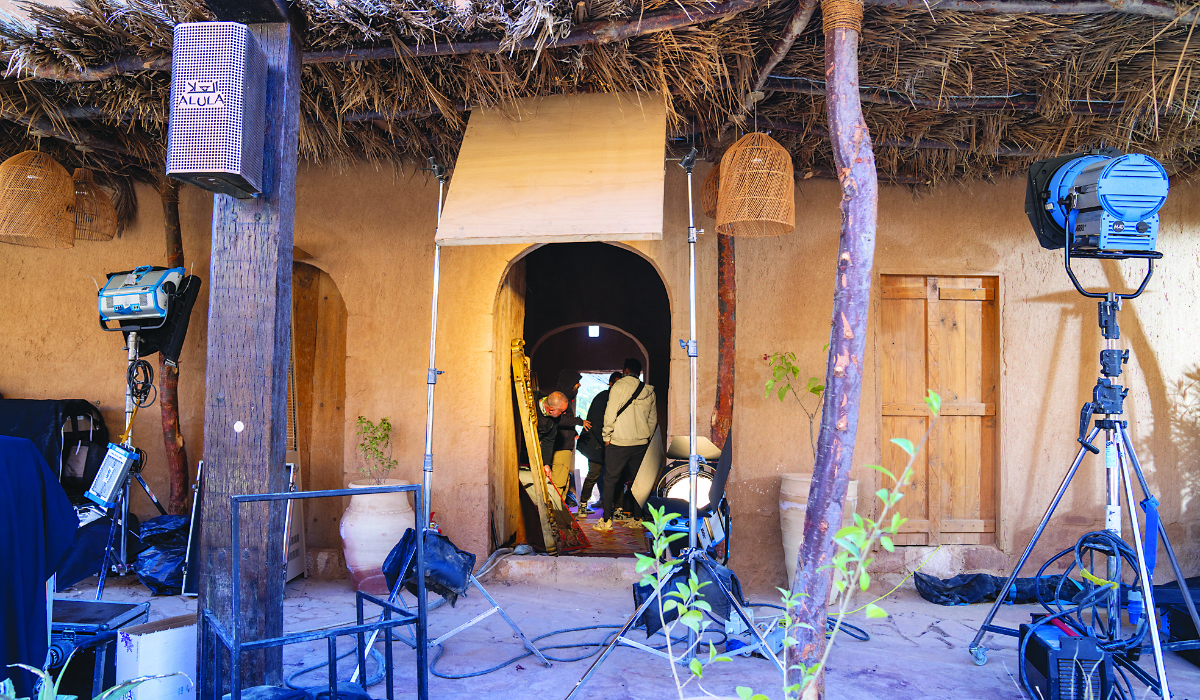
“We were fortunate to have the director Haifaa Mansour provide valuable feedback during the development process.” Alfassi told Arab News. “She is a very kind and inspiring filmmaker, and we were glad as a team to have her visit the set.”
Collaborating closely with industry veterans like Moayad Abualkhair and Al-Mansour, Alfassi benefited from robust feedback loops that significantly enhanced the development process.
HIGHLIGHTS
• Hanaa Alfassi also served as a judge at the 10th Saudi Film Festival, which was held recently this month in Dhahran.
• Her cinematic perspective was profoundly influenced in 2012 during the premiere of ‘Wadjda’ at the Tribeca Film Festival in New York City.
• A film she was involved in, ‘In Between,’ directed by Dalia Bakheet, was selected for the Annecy Film Festival in 2019.
• Her initial foray into the digital arts began with a 3D animation course in 1999 during her high school years in Egypt.
She also faced numerous challenges while filming “When the Shelves Hymn.”
“Despite unexpected delays, the team utilized these interruptions for in-depth discussions and rehearsals, adding depth to their work,” she said.
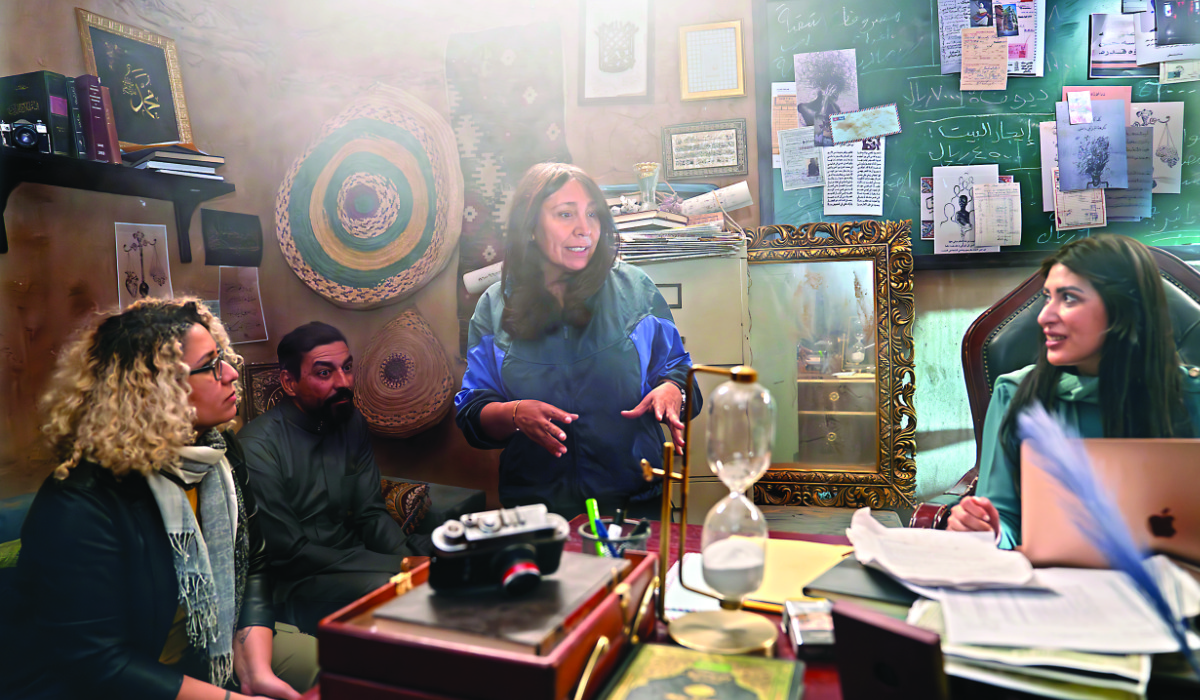
Filming in the old town of AlUla was a deliberate choice, intertwining the narrative with the historic location’s enchanting landscapes.
“The choice of an antique shop in the old town was not only organic to the story but also perfectly aligned with the location’s authenticity,” the filmmaker said.
We were fortunate to have the director Haifaa Al-Mansour provide valuable feedback during the development process.
Hanaa Alfassi, Saudi filmmaker
“Despite the numerous regulations governing shooting location, as it’s a perceived UNESCO heritage site, the production design team led by Amany Wahba and Theory PS ensured strict adherence to all requirements.”
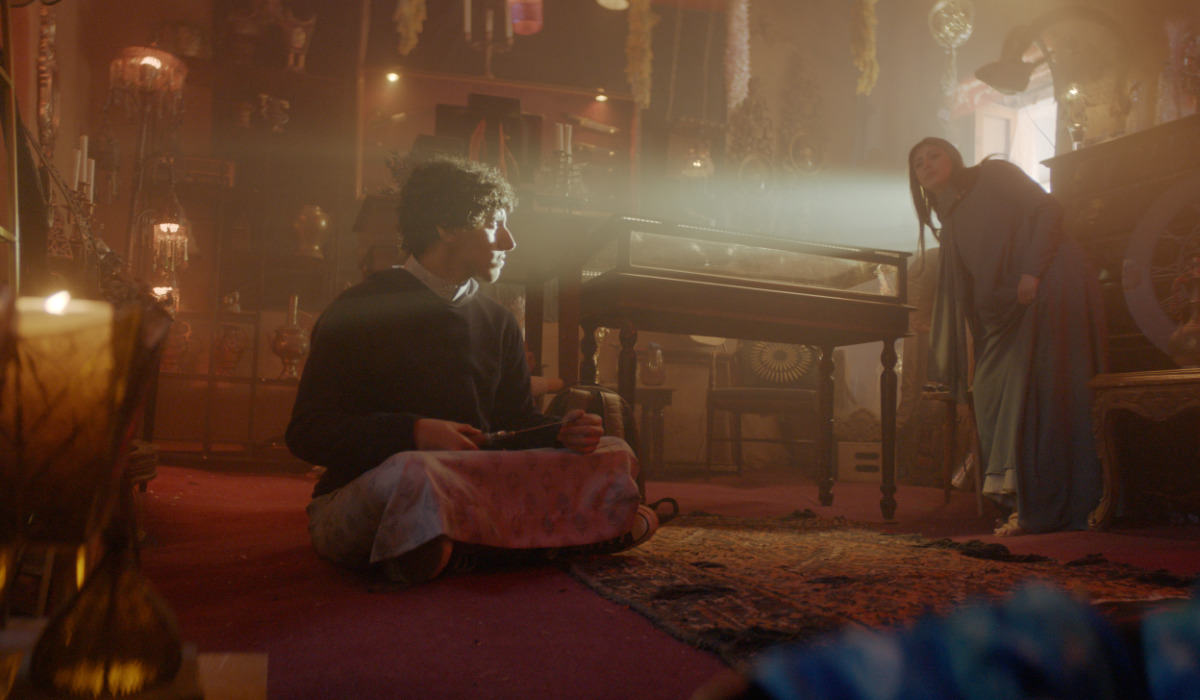
The support from mentors throughout the production was crucial as it helped fine-tune the script, enrich the film’s direction, and ensure the final product was not only a reflection of Alfassi’s vision but also collaborative filmmaking.
“Their support went beyond just providing feedback; it was a source of encouragement and motivation throughout the process,” she told Arab News.
Alfassi also served as a judge at the 10th Saudi Film Festival, which was held recently this month in Dhahran, a task that provided her with a unique vantage point and offers opportunities to partake in meaningful discussions.
“Serving as a jury member is also a learning experience exposing me to a diverse range of films and viewpoints as well as true discussions about the nature of cinema as an art form,” she said.
Alfassi’s cinematic perspective was profoundly influenced in 2012 during the premiere of “Wadjda,” the first feature-length film made by a female Saudi director (Haifaa Al-Mansour) at the Tribeca Film Festival in New York City. The film was the Kingdom’s official submission for the foreign language film category in the 86th Academy Awards, marking the first time the country submitted a film to the Academy for consideration.
At the premier, surrounded by a diverse audience, Alfassi was struck by the universal curiosity and connection films can foster. “It was a moment filled with excitement and curiosity as we witnessed people from diverse backgrounds and cultures come together to experience a film from a different place,” she said.
“This sense of curiosity has always been a part of me, but the experience reinforced its importance. It’s crucial for me today to maintain this curiosity, as it enables me to tell diverse narratives and explore new perspectives.”
Her entry into the world of filmmaking was not straightforward, but rather a series of inspired redirections. Her initial foray into the digital arts began with a 3D animation course in 1999 during her high school years in Egypt.
Although the emerging digital era fascinated her, Alfassi found the detailed process of animation to be too time-consuming. This led her to explore photography, which temporarily satisfied her storytelling impulses. However, her desire to tell dynamic, evolving stories only grew from there.
Alfassi enrolled in the filmmaking institute, setting her career trajectory firmly toward the cinema. “As I pursued my studies in mass communication at University of Ain Shams, my mother discovered a new institute founded by one of Egypt’s renowned filmmakers, Rafat Al-Meehi,” she said. “I enrolled, balancing two years of filmmaking education alongside my college curriculum.”
Over the years, Alfassi has contributed to various short films both as a director and producer. One of these, “Lollipop,” received a financial award from the ENJAAZ Dubai Film Market’s production support fund and gained support from The Heart Productions and the Industry Lab at the New York Film Academy.
“Lollipop” has been showcased at several prestigious festivals, including the Dubai International Film Festival and the Malmo Arab Film Festival. It was also featured in the “Hope” program by ANHAR, the Arab Network for Human Rights Films.
Another project she was involved in, “In Between,” directed by Dalia Bakheet, was officially selected for the renowned Annecy Film Festival in 2019.
From being inspired by a film by Al-Mansour to becoming a film director herself and having Al-Mansour on site, Alfassi’s hard work and perseverance has clearly paid off. Late last year at the 2023 Red Sea International Film Festival, alongside her colleagues Jade and Mana Al-Majd, she clinched one of the two awards in the TV Series Lab category for their comedy TV pilot set in Saudi Arabia, an achievement she considers an honor.
Alfassi’s journey in filmmaking is a compelling narrative of passion, adaption, and perseverance.
Looking ahead, the Saudi filmmaker is enthusiastic about her participation in future festivals and is keen to leverage platforms like the Cannes Film Festival to broaden her network and introduce her work to a global audience.


